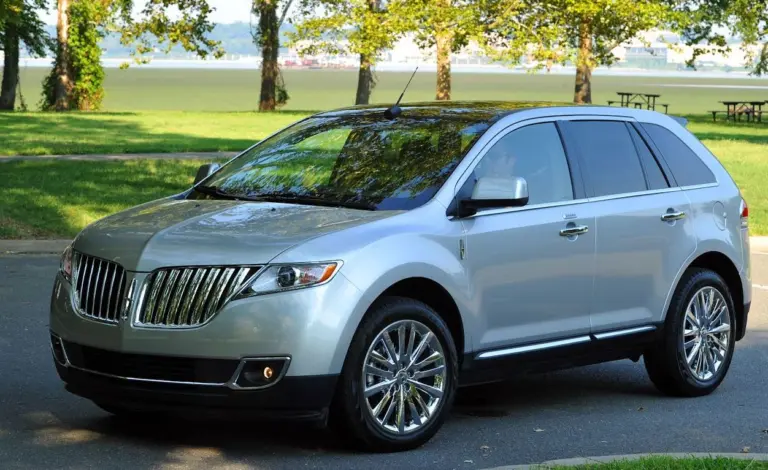Nissan Sentra Years to Avoid (Updated)
The Nissan Sentra has been a staple in the compact car market for decades. Known for its affordability and practicality, it attracts a wide range of buyers. However, there are some Nissan Sentra years to avoid.
However, not all Sentra models live up to their reputation for reliability. Some years are infamous for significant issues that can lead to expensive repairs or safety hazards. Knowing which models to avoid is crucial if you’re planning to buy a used Nissan Sentra.
Nissan Sentra Years to Avoid
2004-2005: Engine Troubles and Reliability Issues
The 2004 and 2005 Sentra models have been widely criticized for severe engine problems. These cars are prone to blown head gaskets, overheating, and even complete engine failure.
Owners frequently reported sudden loss of power, which could be dangerous on highways. Repairing these engines often costs thousands of dollars, making these models a risky choice. Additionally, electrical system malfunctions and faulty sensors add to their list of issues.
2008: Transmission and Wheel Defects
The 2008 Sentra stands out for persistent transmission problems. Many owners experienced sudden transmission failure, resulting in loss of power while driving.
Issues with rusted rims and defective hubcaps also impacted the overall safety of the vehicle. These problems make it an unreliable option, especially if you’re looking for a low-maintenance car.
2012-2015: Plagued by CVT Failures
The continuously variable transmission (CVT) used in Sentras from 2012 to 2015 became a major source of complaints. Drivers reported excessive shuddering, slipping, and outright failure of the transmission.
These issues led to expensive repairs and frequent breakdowns. Stalling while driving and difficulty accelerating were also common concerns, making these models a gamble.
2016-2017: Lingering Transmission Concerns
Although Nissan attempted to address CVT issues, the 2016 and 2017 models still suffered from similar problems. Shuddering during acceleration, slipping gears, and delayed engagement frustrated many owners.
While improvements were made compared to earlier models, the risks associated with these vehicles remain higher than average.
Common Problems in These Model Years
Transmission Issues
Transmission problems are among the most reported complaints for Nissan Sentras in the years mentioned. The continuously variable transmission (CVT) in these models is especially prone to failure. Symptoms include slipping, shuddering during acceleration, and delayed gear engagement.
In severe cases, the transmission would completely fail, leaving drivers stranded. Many owners also reported stalling while driving, a serious safety hazard. Repairing or replacing the CVT can cost several thousand dollars, making these models an expensive gamble.
Engine Problems
Engine troubles, particularly in the 2004 and 2005 Sentras, are another significant concern. Blown head gaskets, overheating, and stalling plagued these models.
Owners frequently experienced sudden power loss, especially during long drives or in extreme temperatures. Overheating could cause irreversible engine damage if not addressed promptly. Repairs often involve replacing critical components, which are neither cheap nor quick to fix.
Brake and Steering Defects
Certain Sentras also suffered from brake and steering issues. Owners of 2012-2015 models reported defective brakes that required excessive pressure to engage. This could be particularly dangerous during emergencies.
Additionally, some models had problems with steering control, leading to unpredictable handling. These defects make the car harder to operate safely, increasing the risk of accidents.
Electrical System Failures
The electrical systems in some Sentra models also posed significant problems. Malfunctioning sensors caused inaccurate readings for fuel levels and temperature.
Airbags failed to deploy in certain cases, adding to safety concerns. Electrical malfunctions extended to power windows, locks, and other essential components, further diminishing the reliability of these vehicles.
Recurring Maintenance Costs
Owners of problematic Sentra models often face recurring maintenance expenses. Regular breakdowns, combined with high repair costs, make these vehicles less economical over time. Buyers might initially be attracted to the affordable price, but ongoing issues quickly erode any savings.
Recommended Nissan Sentra Years
While some Nissan Sentra models are known for issues, many years offer reliability, affordability, and excellent value. If you’re considering a used Sentra, focus on these model years that have consistently received positive reviews from owners and experts alike.
2011: Balanced Performance and Reliability
The 2011 Nissan Sentra is often praised for its reliability and practicality. This model comes with fewer complaints about major components like the transmission and engine.
Its straightforward design and dependable performance make it an excellent choice for those seeking a budget-friendly compact sedan. Additionally, the maintenance costs are manageable, and spare parts are widely available.
2018-2020: Modern Features and Enhanced Safety
The 2018 to 2020 Sentras stand out for their improved design and upgraded features. These models received better safety ratings, making them suitable for families or first-time drivers.
The transmission issues that plagued earlier years were significantly reduced, and the engines are more refined for smoother performance. You’ll also find modern features like advanced infotainment systems, rearview cameras, and better fuel efficiency.
2021 and Beyond: Redesigned and Reliable
The 2021 and newer Sentra models underwent a significant redesign, bringing in enhanced aesthetics, cutting-edge technology, and improved driving dynamics.
These models feature advanced driver-assistance systems, improved handling, and a more comfortable cabin. The CVT used in these models has shown marked reliability improvements, addressing earlier concerns.
2007: A Budget-Friendly Option
For buyers on a tight budget, the 2007 Sentra can be a solid choice. While it lacks modern features, it boasts a dependable engine and simple mechanics, making it easier and cheaper to maintain. This model has fewer complaints compared to its successors and predecessors from the problematic years.
Frequently Asked Questions (F.A.Q)
Are all Nissan Sentra models unreliable?
No, not all Nissan Sentra models are unreliable. While certain years have reported frequent and costly issues, many Sentras are known for their durability and efficiency. Researching specific years and being cautious with models known for defects can help you find a dependable car. Always check for maintenance records and a clean history before making a purchase.
How can I verify if a used Nissan Sentra has been recalled?
You can verify recalls by entering the Vehicle Identification Number (VIN) on the National Highway Traffic Safety Administration (NHTSA) website. This free tool provides detailed information about recalls and whether they’ve been resolved. Alternatively, contact a Nissan dealership, as they can also provide a recall history for the vehicle.
Is it safe to purchase a Nissan Sentra from one of the problematic years?
While not impossible, buying a Sentra from these years comes with significant risks. If you choose to consider one, ensure the car has a thorough inspection by a trusted mechanic. Verify that all recalls have been addressed and request a detailed vehicle history report to identify past issues.
What should I do if I currently own a Nissan Sentra from a problematic year?
If you own one of these models, it’s essential to stay proactive with maintenance. Address recalls promptly and schedule regular inspections to detect potential problems early. Consider consulting a mechanic to evaluate any recurring issues and discuss cost-effective solutions to enhance the car’s reliability.
Why are transmission problems so common in Nissan Sentras?
Nissan’s use of continuously variable transmissions (CVTs) is a key factor in these recurring issues. While CVTs are designed for fuel efficiency, their complex design can lead to overheating, slipping, and wear over time. Some CVTs in Nissan Sentras were prone to failure due to inadequate cooling systems and design flaws.
Wrapping Up
Purchasing a used vehicle requires careful consideration, especially when certain models are known for recurring problems. The Nissan Sentra, though generally popular for its affordability and practicality, has specific model years that buyers should approach cautiously. From transmission failures to engine troubles and electrical system malfunctions, these issues can lead to significant repair costs and safety concerns.
| Read Also |
| Nissan Murano Years to Avoid |







